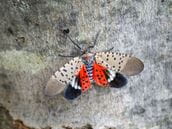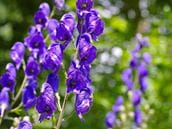
True Stories for Springtime
In the woods or in the garden, nature can surprise the unprepared.
Displaying 11 - 20 of 168 results for "plants"
In the woods or in the garden, nature can surprise the unprepared.
The spotted lanternfly is an insect species native to parts of China and Vietnam. The insect itself does not bite or sting. It is not known to be toxic to humans but could cause upset stomach if ingested. Potential side effects of ingesting small amounts of spotted lanternflies are nausea, vomiting, constipation, abdominal pain, and loss of appetite. These symptoms are self-limited and do not typically require treatment.
Aconitum napellus flowers look beautiful, but swallowing any part of the plant could be deadly.
Cannabidiol (CBD) is one of the most studied compounds of the cannabis plant. CBD drew attention when it was shown to stop seizures in a group of patients with a form of epilepsy that does not respond to conventional therapies. Potential benefits of CBD might include anti-inflammatory, immune system, and anti-anxiety effects. A great deal more scientific investigation is needed.
Euphorbia, also known as spurges, is a genus of over 2000 different flowering plants. These plants contain a milky white sap that can be very irritating to the skin, eyes, and mouth. If someone is exposed to spurge sap, it is important to decontaminate the exposed area.
Pokeberries are found in grape-like clusters on tall perennials with purple-red stems. Eating several berries can cause stomach pain, nausea, vomiting, and diarrhea. Adults have eaten the roots, mistaking them for medicinal plants. Serious symptoms have subsequently occurred, including bloody vomiting, bloody diarrhea, and low blood pressure.
Cocklebur seeds might look and taste like sunflower seeds but they should never be eaten! The seeds can cause abdominal pain, vomiting, low blood sugar, seizures, and severe liver injury.
Foxglove grows throughout the United States. It grows in the wild and is often cultivated for its beauty in private gardens. All parts of the plant are poisonous, possibly even deadly, if swallowed.
All parts of the Spanish broom plant (Spartium junceum) are considered toxic. It can cause symptoms ranging from abdominal pain, nausea, vomiting, and diarrhea to more serious effects like seizures and respiratory failure.
Onions are pungent, contain plentiful nutrients, and have many potential health benefits. When cut or damaged, onions can cause eye irritation and tear production due to the formation of a sulfur-containing chemical (called “lachrymatory factor”).
Don't guess what you should do. Get accurate Poison Control answers online or by phone. Both are free and confidential.
or CALL 1-800-222-1222
The Poison Post® is a free, quarterly
e-newsletter delivering poison prevention tips right to your inbox!
Learn the Poison Help jingle in English or Spanish. Use these jingles to teach the Poison Control number: 1-800-222-1222. Available for download.










